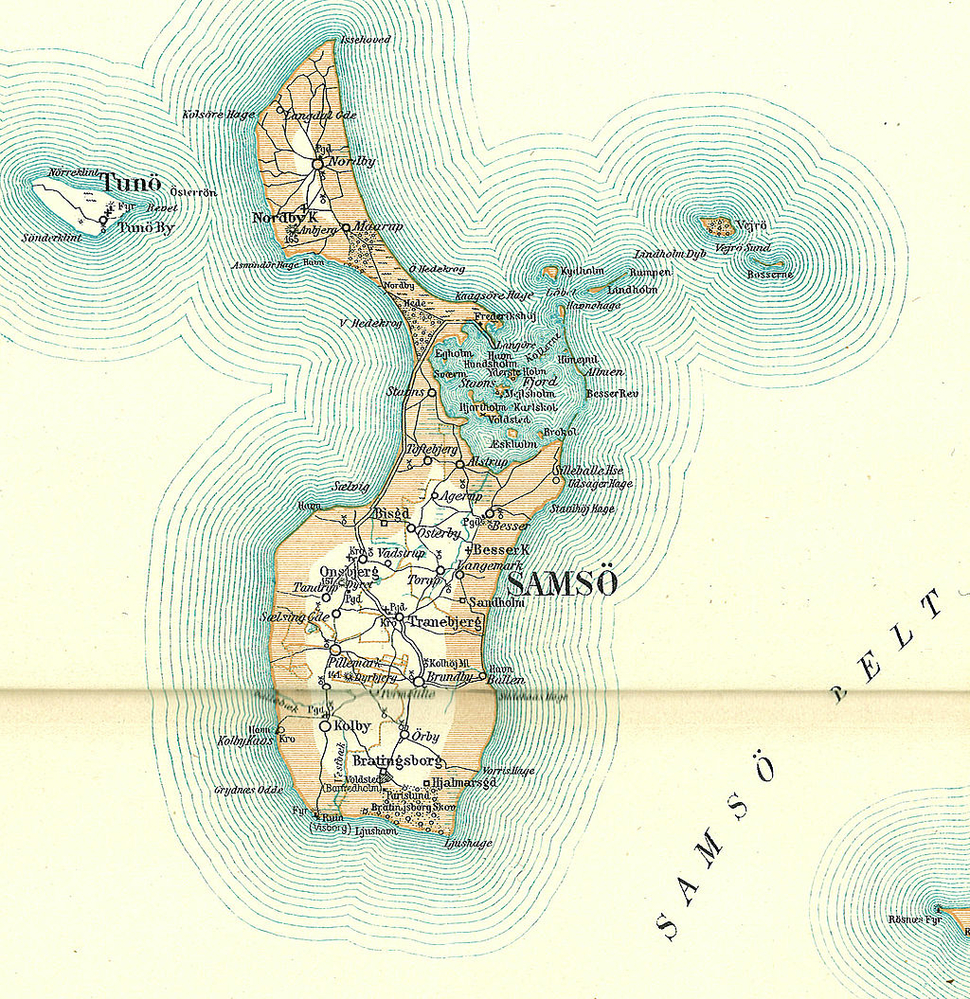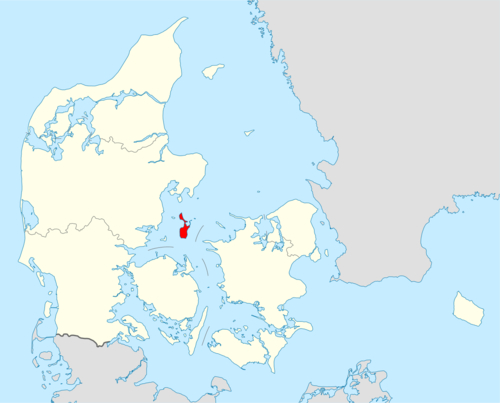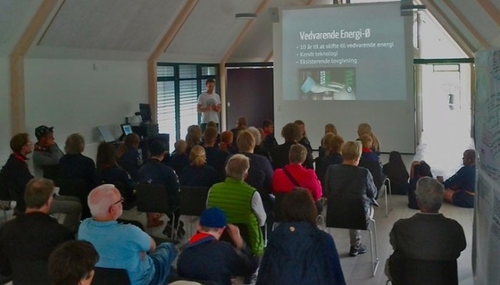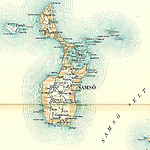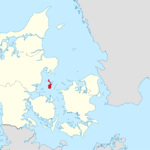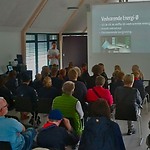Sustainable island Samsø, I have heard about it, but I do actually not know a lot about it. I get the impression that if I am interested in sustainability and if I am following the course Engineering for Sustainable Development, I should at least know something about it. This column is a chance for me to learn more about it.
Samsø is an island in Denmark, situated in the Kattegat and is also called the renewable energy island as it is 100% CO2 neutral. This renewable energy is created by wind power and biomass by 3 straw heating plants, 1 solar and wood chip heating plant, 11 onshore wind turbines on 1 MW and 10 offshore wind turbines on 2.3 MW[i]. Moreover, the agriculture and production on the island is ecological. Samsø is especially known for its potatoes[ii].
Map of Samsø (red) situated in the Kattegat, Denmark.
This concept of a renewable energy island was initiated in 1997 when Samsø won the competition run by the Danish government to become a community based on renewable energy. This was an opportunity for the island as it was dependent on fossil fuels from the main land[ii]. Its self-sufficiency has been realised within 10 years[iii].
Samsø is electrically 100% energy neutral; while for heat still 30% of unrenewable source is being used. But this is being compensated by the offshore windmills as Samsø even exports energy to the main land[iv]. New goals are to become a fossil free island in 2030[iii]. Part of this goal is the sub goal that in 2020 half of the local cars must be electric. Another sub goal is that in 2020 the heating of local households must be reduced with 33%[iii].
Ok, well for now I know Samsø is a sustainable island. But what I do wonder about are the people. How did they agree on this? As the island was dependent on fossil fuels from the main land the socio technical system was based on these. To create a sustainable transition the agents, in this case the citizens, are important. They have to be driven and motivated to become part of a new sustainable community.
What I learned in another course, Energy Friendly Renovation Processes[v], is that trust and enthusiasm are important to create a positive attitude about change. Involvement, participation and sense of ownership are thereby important.
From the beginning on local citizens have been involved in the process by meetings and workgroups to create a sense of ownership for the project[iv]. This will create a positive attitude whereby citizens are more likely to agree on the sustainability transition.
In 2007 the Energy Academy was opened. This is a place for the neighbourhood to learn about the sustainable measures and further developing the sustainable island. This building was built by local craftsmen which creates trust among the residents and a sense of ownership among the craftsmen, as they were responsible for the building. The building functions as a meeting place for the community of citizens and even for tourists[iii].
People of Samsø during a meeting in the Energy Academy.
Ownership, leadership and community power are essential parts of the sustainability transition of Samsø[iii]. 90% of the wind mills are owned by the citizens. This creates a sense of ownership as they feel involved and responsible. Even 70% of the total investments is done by the local citizens.
There used to be resistance against the plans for becoming a sustainable island. But what made people positive about it, was that more jobs have been created by this transition. For example the golf course, with sustainable greens and machinery, is run by local citizens.
By involving the people in the decision making and development of their own sustainable island the community became closer. A close community with social control and social contacts leads to more well-being and happiness among the people[v].
Samsø appears to be not only a sustainable island in the matter of energy and technology but also for social sustainability: the people being positive about the transition is important to make the development being succeed and to make the goals being achieved. A sustainability transition in the whole socio-technical system has taken place, whereby a new, sustainable socio-technical system has been created. Without the agents of Samsø this transition would not have been possible.
[i] http://www.visitsamsoe.dk/en/inspiration/facts-about-samsoe/
[ii] https://en.wikipedia.org/wiki/Sams%C3%B8
[iii] http://www.visitsamsoe.dk/en/inspiration/energy-academy/
[iv] http://www.dac.dk/en/dac-cities/sustainable-cities/all-cases/energy/samsoe-a-role-model-in-self-sufficiency/
[v] For the information learned in this course I would like to refer to the knowledge videos and literature on the Blackboard page of Energy Friendly Renovation Processes (AR0054) at https://blackboard.tudelft.nl
